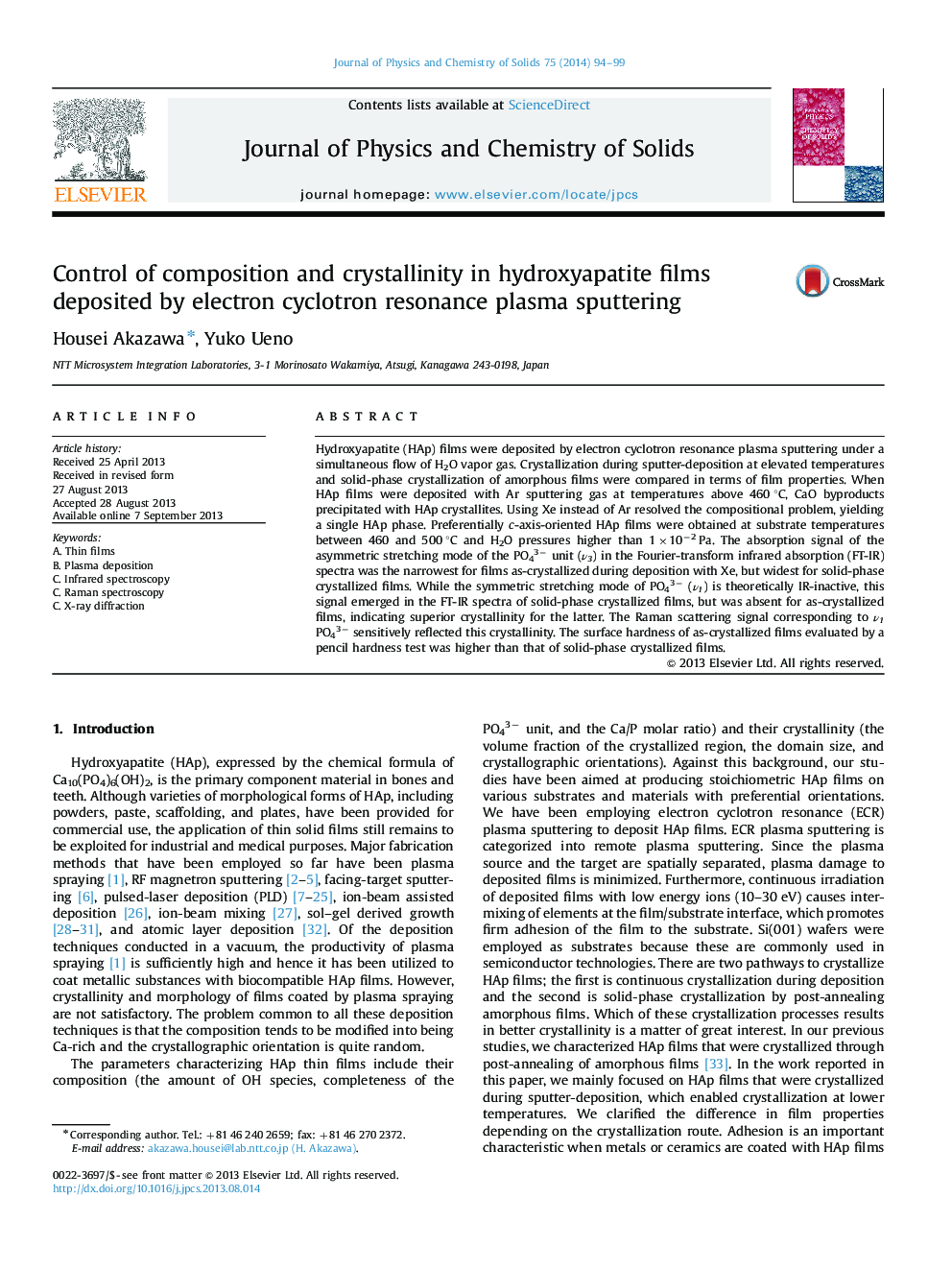| Article ID | Journal | Published Year | Pages | File Type |
|---|---|---|---|---|
| 1515952 | Journal of Physics and Chemistry of Solids | 2014 | 6 Pages |
Abstract
Hydroxyapatite (HAp) films were deposited by electron cyclotron resonance plasma sputtering under a simultaneous flow of H2O vapor gas. Crystallization during sputter-deposition at elevated temperatures and solid-phase crystallization of amorphous films were compared in terms of film properties. When HAp films were deposited with Ar sputtering gas at temperatures above 460 °C, CaO byproducts precipitated with HAp crystallites. Using Xe instead of Ar resolved the compositional problem, yielding a single HAp phase. Preferentially c-axis-oriented HAp films were obtained at substrate temperatures between 460 and 500 °C and H2O pressures higher than 1Ã10â2 Pa. The absorption signal of the asymmetric stretching mode of the PO43â unit (ν3) in the Fourier-transform infrared absorption (FT-IR) spectra was the narrowest for films as-crystallized during deposition with Xe, but widest for solid-phase crystallized films. While the symmetric stretching mode of PO43â (ν1) is theoretically IR-inactive, this signal emerged in the FT-IR spectra of solid-phase crystallized films, but was absent for as-crystallized films, indicating superior crystallinity for the latter. The Raman scattering signal corresponding to ν1 PO43â sensitively reflected this crystallinity. The surface hardness of as-crystallized films evaluated by a pencil hardness test was higher than that of solid-phase crystallized films.
Keywords
Related Topics
Physical Sciences and Engineering
Materials Science
Electronic, Optical and Magnetic Materials
Authors
Housei Akazawa, Yuko Ueno,
